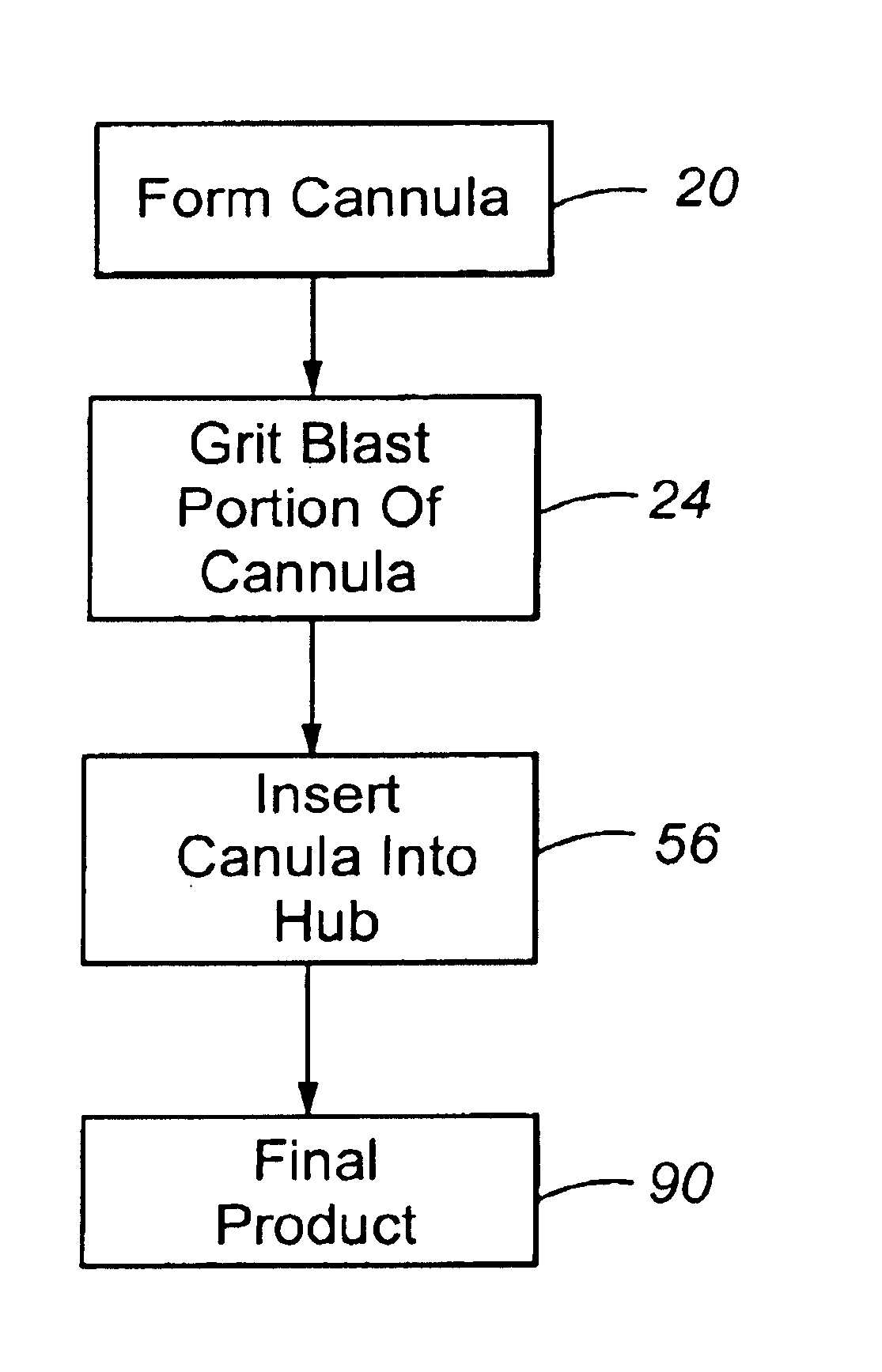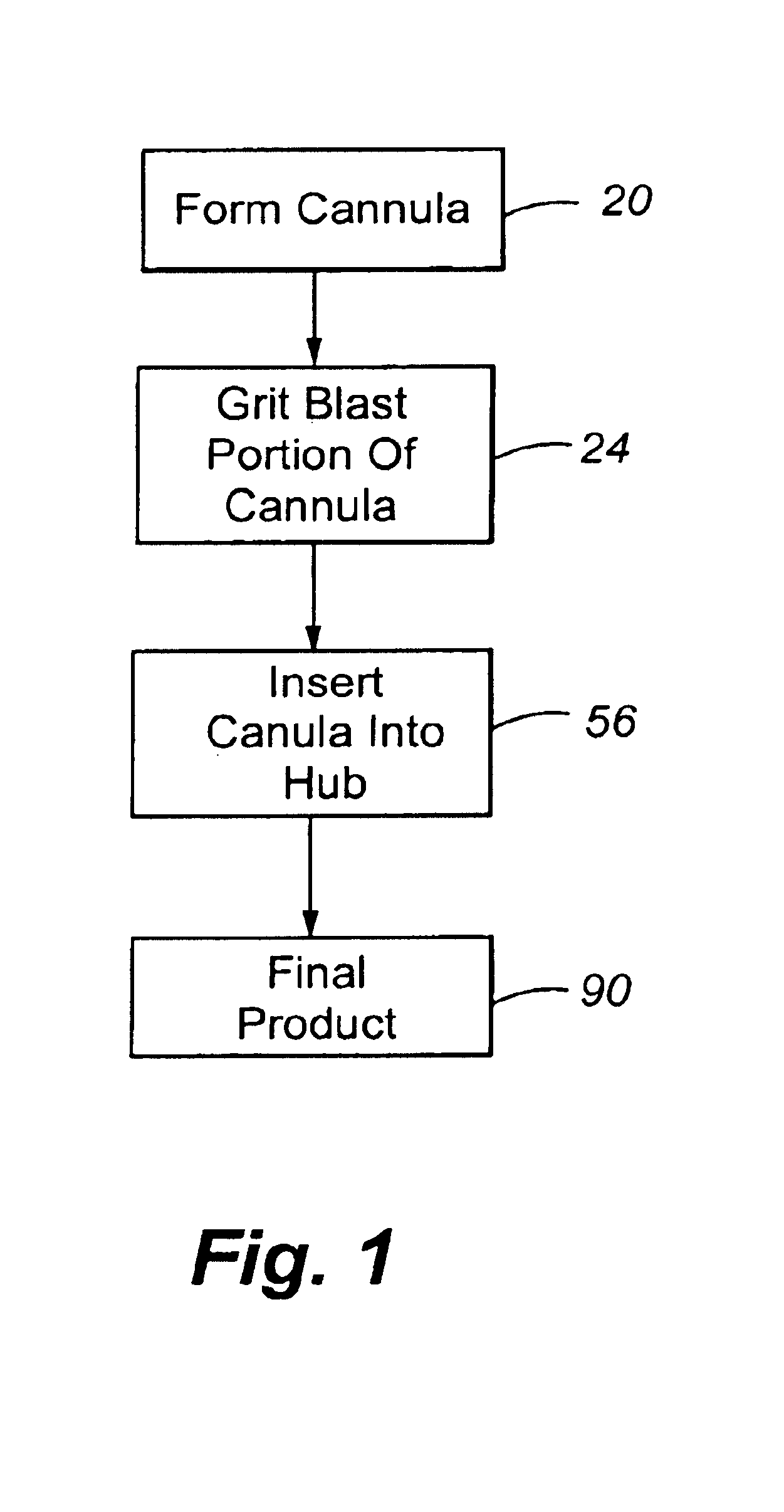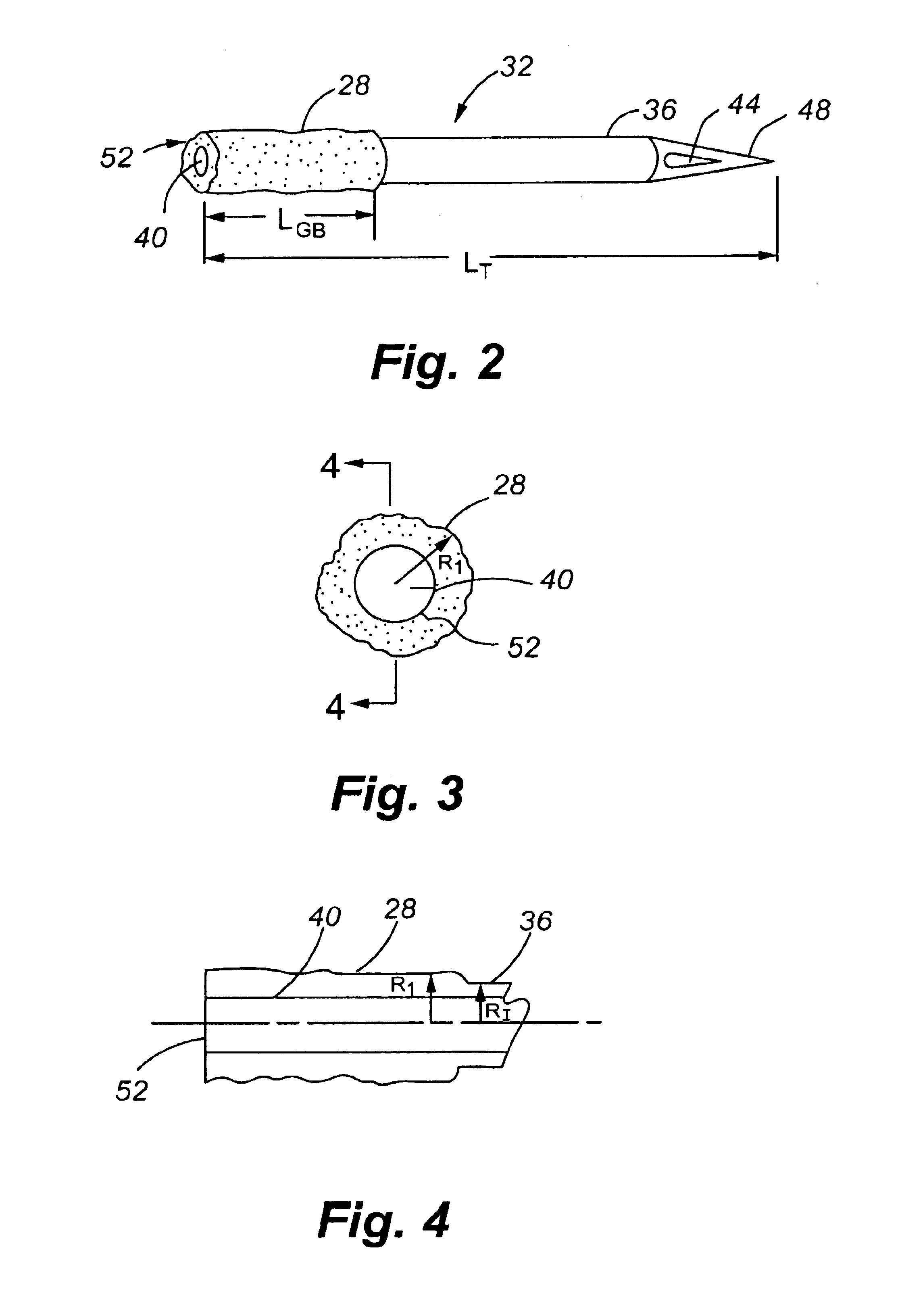Method for manufacturing a cannula assembly
a manufacturing method and cannula technology, applied in the field of cannulas, can solve the problems of imposing further substantial limitations on the types of plastics, undesirable alteration of physical characteristics, strength, etc., and achieve the effects of reducing manufacturing costs, increasing capacity, and sufficient strength
- Summary
- Abstract
- Description
- Claims
- Application Information
AI Technical Summary
Benefits of technology
Problems solved by technology
Method used
Image
Examples
Embodiment Construction
[0042]The manufacturing process of the present invention will be described with reference to FIG. 1. In the first step 20, the cannula is formed by a suitable process. Such processes are conventional. Typically, the cannula is formed from a high strength, nontoxic material such as stainless steel. The cannula can be of any length or diameter, depending upon the application.
[0043]In the second step 24, the proximal (nonpuncturing or unpointed or blunt) end of the cannula is grit blasted to form a roughened surface or roughened portion of the cannula.
[0044]The depth of the grit blast is sufficiently high to permit a strong (nonadhesive) bond to form between the hub member and the cannula. Typically, the grit blast depth provides a radius for the roughened portion which creates an outer diameter greater than the inner diameter of the hub bore. However, the outer diameter of the roughened portion preferably is a diameter permissive for insertion into the hub bore (e.g., with an insertio...
PUM
| Property | Measurement | Unit |
|---|---|---|
| radius | aaaaa | aaaaa |
| length | aaaaa | aaaaa |
| length | aaaaa | aaaaa |
Abstract
Description
Claims
Application Information
 Login to View More
Login to View More - R&D
- Intellectual Property
- Life Sciences
- Materials
- Tech Scout
- Unparalleled Data Quality
- Higher Quality Content
- 60% Fewer Hallucinations
Browse by: Latest US Patents, China's latest patents, Technical Efficacy Thesaurus, Application Domain, Technology Topic, Popular Technical Reports.
© 2025 PatSnap. All rights reserved.Legal|Privacy policy|Modern Slavery Act Transparency Statement|Sitemap|About US| Contact US: help@patsnap.com



